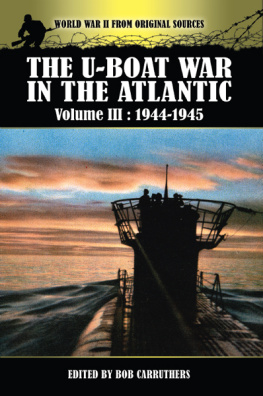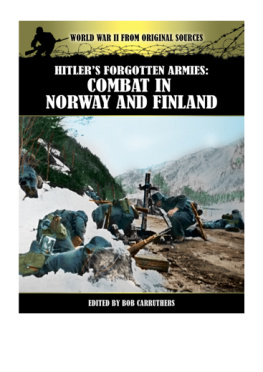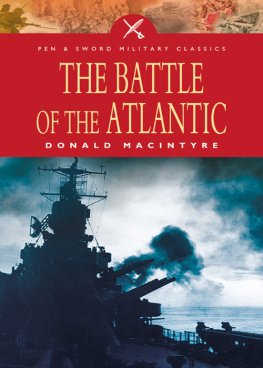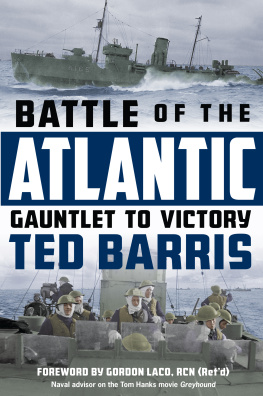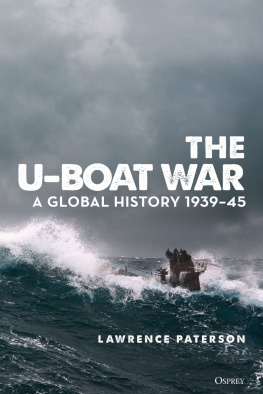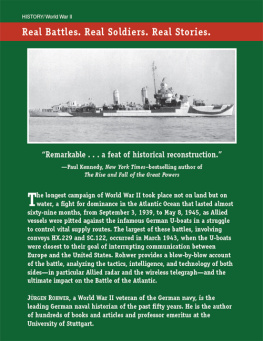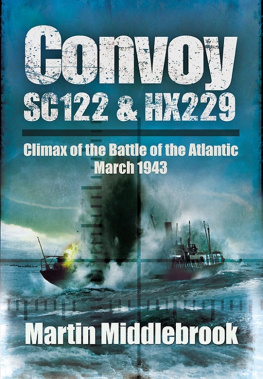This edition published in 2013 by
Pen & Sword Maritime
An imprint of
Pen & Sword Books Ltd
47 Church Street
Barnsley
South Yorkshire
S70 2AS
First published in Great Britain in 2011 in digital format by
Coda Books Ltd.
Copyright Coda Books Ltd, 2011
Published under licence by Pen & Sword Books Ltd.
ISBN: 978 1 78159 161 1
EPUB ISBN: 978 1 47384 653 1
PRC ISBN: 978 1 47384 642 5
A CIP catalogue record for this book is
available from the British Library
All rights reserved. No part of this book may be reproduced or transmitted in any
form or by any means, electronic or mechanical including photocopying, recording
or by any information storage and retrieval system, without permission from the
Publisher in writing.
Printed and bound in India
By Replika Press Pvt. Ltd.
Pen & Sword Books Ltd incorporates the Imprints of Pen & Sword Aviation, Pen &
Sword Family History, Pen & Sword Maritime, Pen & Sword Military, Pen & Sword
Discovery, Pen & Sword Politics, Pen & Sword Atlas, Pen & Sword Archaeology,
Wharncliffe Local History, Wharncliffe True Crime, Wharncliffe Transport, Pen &
Sword Select, Pen & Sword Military Classics, Leo Cooper, The Praetorian Press,
Claymore Press, Remember When, Seaforth Publishing and Frontline Publishing
For a complete list of Pen & Sword titles please contact
PEN & SWORD BOOKS LIMITED
47 Church Street, Barnsley, South Yorkshire, S70 2AS, England
E-mail:
Website: www.pen-and-sword.co.uk
CONTENTS
CHAPTER 7
MAY - AUGUST 1943
CHAPTER 8
NORTH ATLANTIC SEPTEMBER 1943 - FEBRUARY 1944
CHAPTER 9
MAY - AUGUST 1943
CHAPTER 10
JUNE - SEPTEMBER 1944
CHAPTER 11
OCTOBER 1944 - MAY 1945
- CHAPTER 7 -
MAY-AUGUST, 1943
BASIS OF POLICY BETWEEN FEBRUARY AND AUGUST 1943 - DNITZS FIRST MEASURES
334. Requirements of Naval Policy
Historians of the Second World War will no doubt refer to May 1943 as marking the turning-point after which the German U-boat campaign began to collapse under the weight of the combined Allied effort. Yet, in the two years that followed, the U-boat remained unchallenged in its role as Germanys principal naval weapon. Why was this? Did the German authorities really believe that, by means of an all-out effort with the old and new types of U-boat, it was possible to repeat past successes? Did they not realise by May 1943 that the U-boat campaign was ultimately bound to collapse? To answer these questions it is necessary to look beyond the Atlantic - the scene of most of the events described in the preceding volumes - and to consider the general war situation as it then appeared to the responsible German leaders.
It must be admitted that until the beginning of 1943 there had been frequent differences of opinion between the Flag-Officer U-boats and the German Naval Staff; but when Admiral Dnitz became Commander-in-Chief of the Navy these were largely eliminated, for the advice given by the operational staff of the U-boat Command now carried much greater weight than before. Right from the outbreak of war, Dnitz had been consistent in regarding the U-boat as the principal means of waging war against Great Britain and the United States and, once the war had commenced, it was certainly no longer possible to build up a surface fleet in time to challenge the vast superiority of these great maritime powers. Now, in February 1943, when the enemy had begun his air offensive against Germany, when radar had radically altered the basis of surface-ship operations, and when the provision of adequate light forces for the protection of our sea communications also presented difficulties, it was out of the question to think in terms of a balanced German fleet. For Germany the only practical course was, therefore, to continue to apply those means of naval warfare that, despite the enemys control of the sea, could still threaten, or at least do considerable damage to, his sea communications. Chief amongst these means was the U-boat, which alone could penetrate into waters controlled by the enemy. Next in importance came motor torpedo-boats, mines and aircraft and, lastly, the few remaining heavy ships available for operations in those areas where they could be given air cover or support from coastal batteries.
Persistent shipping losses had already caused the Western Allies great embarrassment, forcing them to apply vast resources to the defence of their shipping and to provide the replacements essential for freedom of military movement. Attack on their shipping was quite the most unpleasant feature of our naval operations, besides being the only means we had of inflicting serious damage, and hence it had to continue with all vigour.
335. Dnitzs plans as Head of the Navy
When Dnitz became Commander-in-Chief of the Navy on 30th January 1943, not only were there anxieties over the future of U-boat operations, but he found himself faced with the problems of a general war situation which was already unfavourable, if not desperate. The continued achievements of the Allies in the Mediterranean, the increasing pressure of their air and naval attacks on our coast and sea communications, the air offensive against Germany and its effect on our war industries, shortages in manpower, materials and fuel, and the Luftwaffes failure to support our naval operations - none of these factors was fully appreciated by large sections of the German people or the Wehrmacht, who had complete confidence in Dnitz and hoped that he would now be able to achieve greater success with the Navy.
From the first day in his new office, Dnitz aimed at securing priority for new and better equipment, for the faster development of U-boats and for an improvement in the capacity of the dockyards. As for the new types of U-boat, it was already evident to him that, apart from the Walter propulsion unit, plans for the Type XXI would have to be hurried on. He also envisaged a considerable expansion of the next most important offensive weapon - the motor torpedo-boat. In the summer of 1940 Germany had found herself in possession of advanced bases on the Channel coast - an acquisition never dreamed of in peacetime - and so within easy striking distance of the regular daily convoys that plied the English coast in both directions, carrying goods essential to the British economy. During the next two and a half years, however, E-boat action against these convoys had been on a relatively small scale, never more than 15 boats being employed at any one time, but Dnitz had in mind a considerable expansion of this form of attack to the use of massed flotillas on suitable nights. As regards other German surface forces, only the Arctic still presented some opportunities for offensive operations against the Murmansk convoys.
None of these offensive possibilities could be fully exploited unless supported by air reconnaissance and, despite the failure of previous attempts to secure the support of the Luftwaffe, Dnitz was now determined to obtain Grings consent, not only to co-operation with the navy, but also to intensive independent air operations against Allied shipping through bombing, mining and aerial torpedo attacks.
For the operations of all naval forces it was essential to keep open the operational ports, at a time when the ever-increasing threat of the enemys sea and air forces already underlined the inadequacy of our local defence flotillas for sweeping and protecting the approach channels to the bases and the routes along the extensive coastline from North Cape to the Spanish frontier. Moreover, it was highly important to keep the Baltic clear of mines for the uninterrupted training of the U-boats. Any dislocation of these sea communications would not only interfere with our offensive operations, but could even affect our ability to hold Norway and Finland, with dire consequences to the war economy. Hence, as compared with 1942, it was essential to introduce a greatly increased building programme for destroyers, torpedo-boats, minesweepers, motor-minesweepers, sperrbrechers and small patrol vessels.
Next page
